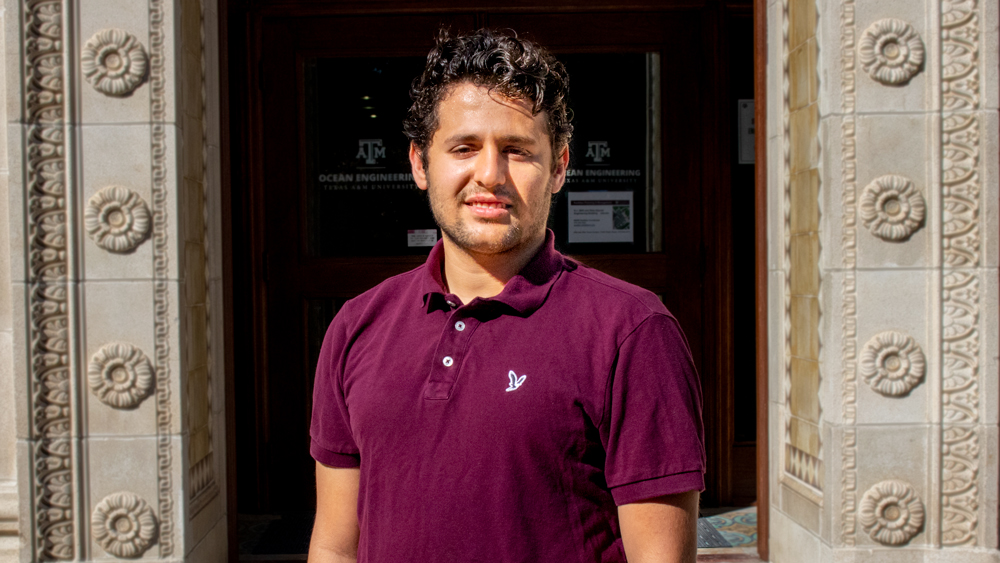
Ahmed Hamada, a graduate student and Ph.D. candidate in the Department of Ocean Engineering at Texas A&M University, has been numerically researching how varying the shape of buoys affects the power generating capabilities of Point Wave Energy Converters (PWEC). His paper was presented at the 2021 Society of Naval Architects and Marine Engineers (SNAME) Maritime Convention.
Having obtained his undergraduate degree in aerospace engineering from Cairo University in Egypt, Hamada’s background in fluid dynamics led him to pursue his graduate degree with faculty advisor Dr. Mirjam Fürth, ocean engineering assistant professor.
“Energy harvesting is a hotspot in academia and industry due to climate change and fossil fuels,” said Hamada. “Under the blue economy, countries want to improve renewable energy, especially offshore wind turbines and wave energy.”
As Hamada explained, moving water has the potential to produce high volumes of energy. However, one underutilized area of renewable energy is wave energy. PWECs generate electricity through the natural rocking motion of ocean waves. They absorb energy at a single point and consist of a buoy structure (the part that moves with the waves) and a subsurface component attached to the seabed.
Nevertheless, with five common shapes for the buoy structure, Hamada asked the question: Which shape is most effective in terms of maximizing energy output?
To answer this, Hamada modeled 3D simulations of each shape in various sea conditions in OpenFOAM using Unsteady Reynolds Averaged Navier-Stokes equations with the Finite Volume Method. In doing so, he investigated the lift, drag forces, amplitudes and frequencies for each shape. From there, he calculated each shape’s efficiency in energy harvesting.
Through researching the displacements, frequency and design parameters numerically, Hamada was able to determine that the spheroid buoy shape was optimal for maximizing energy output.
“The shape is very similar to an American football,” he said. “Like a football, where the shape was chosen because of efficiency in terms of aerodynamic forces when throwing the ball, the same concepts can be applied to ocean engineering and fluid dynamic forces.”
Hamada went on to explain that having a chance to showcase his work in front of industry and academic leaders at the maritime convention allowed him to not only practice his presentation skills but also gave him a chance to receive vital feedback from experts. Some SNAME members asked questions or gave pointers that will help to guide the future of his research.
Additionally, he said that he’s excited to be working in a realm of engineering that places him at the forefront of the energy transition and blue economy movements — two emerging areas of the economy that are not only impactful for innovation but to environmental sustainability.
“I feel like I'm building for the next generation because what I'm doing right now will affect society and will help academia and industry move to the next phase of renewable energy,” he said. “Our work in energy harvesting is not only related to power and electricity, but also to saving our environment.”